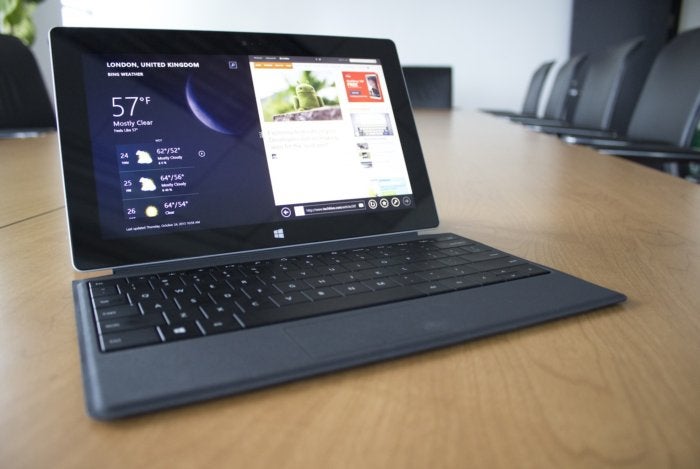Microsoft could have impressed the world with the update to its entry-level Surface tablet, but instead it released the Surface 2. The new tablet’s price tag might be $50 less than the original, introductory cost of the Surface RT, but no price reduction can mitigate the Surface 2’s fundamental problems—most of which stem from Microsoft’s operating system and apps ecosystem.
Indeed, what we have in the Surface 2 is a classy-looking, VaporMg-clad container of missed opportunity. The new tablet benefits from some spec bumps, but it simply doesn’t do enough to breathe relevance into Microsoft’s unpopular ARM-based tablet platform.
Precisely when Microsoft needed to make a bold move—like removing the desktop from its Windows RT 8.1 tablet once and for all—it released a cautious, tepid, half-step advancement. It’s almost as if Microsoft is telling the world that its RT effort is a hobby. Or maybe even a distraction. Or maybe just a product line it can’t bear to let die.
 image: mike homnick
image: mike homnickLet’s not quibble over 1/100th of an inch
On its website, Microsoft makes a big deal about how the Surface 2 is “thinner, faster, and lighter than before.” Yes, technically the new tablet is thinner and lighter, but let’s moderate our Kool-Aid intake before this party gets out of hand. Compared to the model it replaces, the Surface 2 is just two one-hundredths of an inch thinner, and one one-hundredth of a pound lighter. If you can notice the difference, you’re a piece of scientific measuring equipment, and not a human being.
To read this article in full or to leave a comment, please click here
EMS TECHNOLOGIES EMC ELECTRONICS FOR IMAGING ELECTRONIC DATA SYSTEMS ELECTRONIC ARTS ECLIPSYS EASTMAN KODAK CO
No comments:
Post a Comment